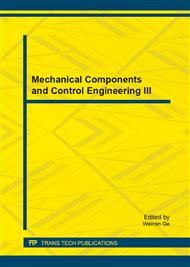p.22
p.27
p.31
p.35
p.39
p.43
p.48
p.52
p.56
Mechanical Property and Corrosion Resistance of the E309L Buffer Layer in Weld Overlay
Abstract:
The weld overlay technology of high strength low alloy steel (HSLA) and austenitic stainless steel is widely applied in such fields as petroleum, chemical industry and energy, and its service environment is of high temperature and corrosion. As the matching performance is often poor for both austenitic stainless steel and high strength low alloy steel, cavities and crackles occur easily at the joints, which cause brittle fractures with dangerousness to some extent. So in the present study, the metal-inert gas welding (MIG) is used to clad the austenitic stainless steel to HSLA. In the experimental group, 4mm buffer layer (E309L) and 8mm cladding layer (E347L) were successively cladded on the substrate (Q345B), while 12mm cladding layer was directly deposited on the substrate in the control group. The hot corrosion tests were done, and through the scanning electron microscope (SEM), we observed the cross-sectional morphology. By the X-ray diffraction (XRD), we analyzed ingredients of the corrosion products. The corrosion products in the experimental group mainly consist of iron and nickel oxides, while the products are mainly iron complex compound and salt in the control group. The SEM results show the area near the welding seam of the specimens without buffer layer had been corroded severely. However, only a slight corrosion occurs adjacent to the welding seam. This demonstrates that the buffer layer can protect the specimens from being corroded.
Info:
Periodical:
Pages:
39-42
Citation:
Online since:
October 2014
Authors:
Keywords:
Price:
Сopyright:
© 2014 Trans Tech Publications Ltd. All Rights Reserved
Share:
Citation:


